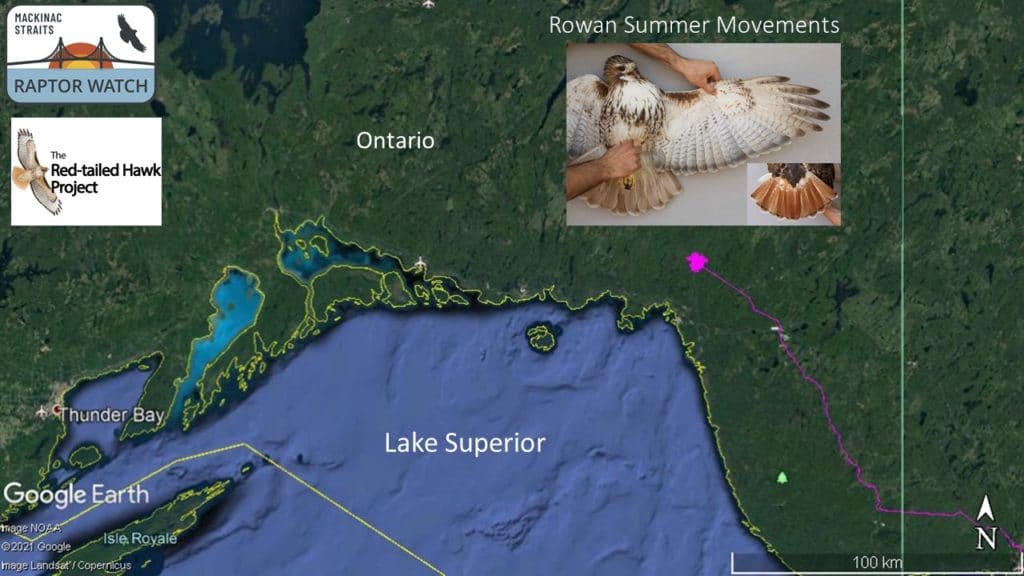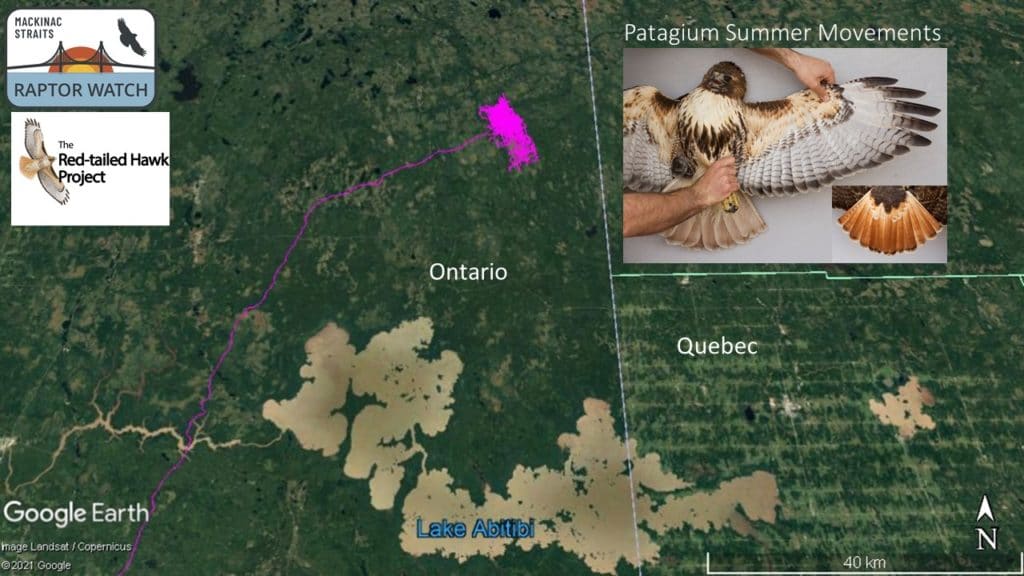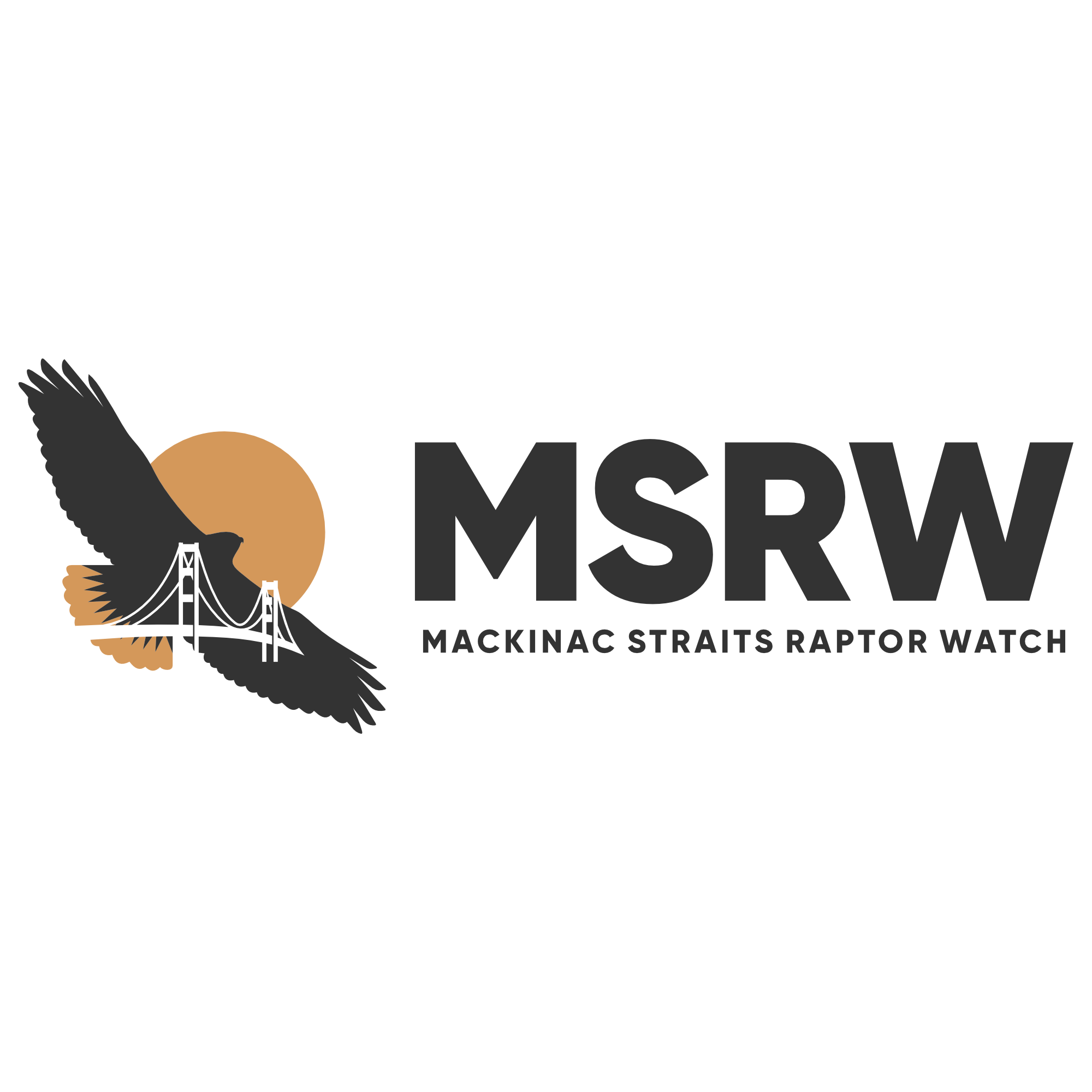This past Spring MSRW embarked on a new project to study migratory Red-tailed Hawks. We deployed GPS transmitters this past Spring on adult birds migrating through the Straits to help document their full cycle migration in the great lakes region and to better understand the Straits as a migratory corridor for these migrant Red- tails.
The transmitters we are using are GPS/GSM units, meaning that they will transmit data as long as there are cellular towers in close proximity that they can connect to. These are different from satellite units which are online year-round and work off of the satellite system. While GPS/GSM units are great the only downside is that we must wait in anticipation for our hawks to return from their Northern breeding grounds where there are few cell towers. Lucky for us we have had two birds this summer, “Rowan” and “Patagium” transmit fairly regularly due to them being in an area with service. Here is an update for each bird about their summer movements.
Rowan currently is located on the North shore of Lake Superior about 15 miles Northeast of a town called Marathon in Ontario. It appears that Rowan bred in the boreal forest near a large creek that feeds into Lake Superior. Also based off of the GPS fixes in this territory, we presume that Rowan is a male based off of his behavior. However, this will be determined with a genetic analysis. To date Rowan has so far provided over 5000 GPS points with the additional environmental and behavioral data which is very exciting! (See Picture Below). Note the pink dot is Rowan’s summer territory on the map.

Our other Red-tail that has kept in contact this summer is Patagium. Unlike Rowan, Patagium took a Northeast trajectory migrating through Ontario and settling in an area about 50 miles North of Lake Abitibi. Based off of Patagium’s movements and size we believe that this bird is a female. Patagium is also about 200 miles South of James Bay. To date we have over 15,000 GPS points from Patagium which is incredible! (See map below, pink dot indicates summer territory).

As Fall migration is beginning, we are hoping that in about a month, we will start to hear from many of our other Red-tails that have been offline all summer. We are excited to find out where they bred and also gain insight into how the great lakes will shape their southbound migration and where they will ultimately decide to spend the winter. Until then continue to follow along on this blog for updates on our project, and be sure to check out The Red-tailed Hawk project to see other work being done on this incredible species by my collaborators! https://redtailedhawkproject.org/

